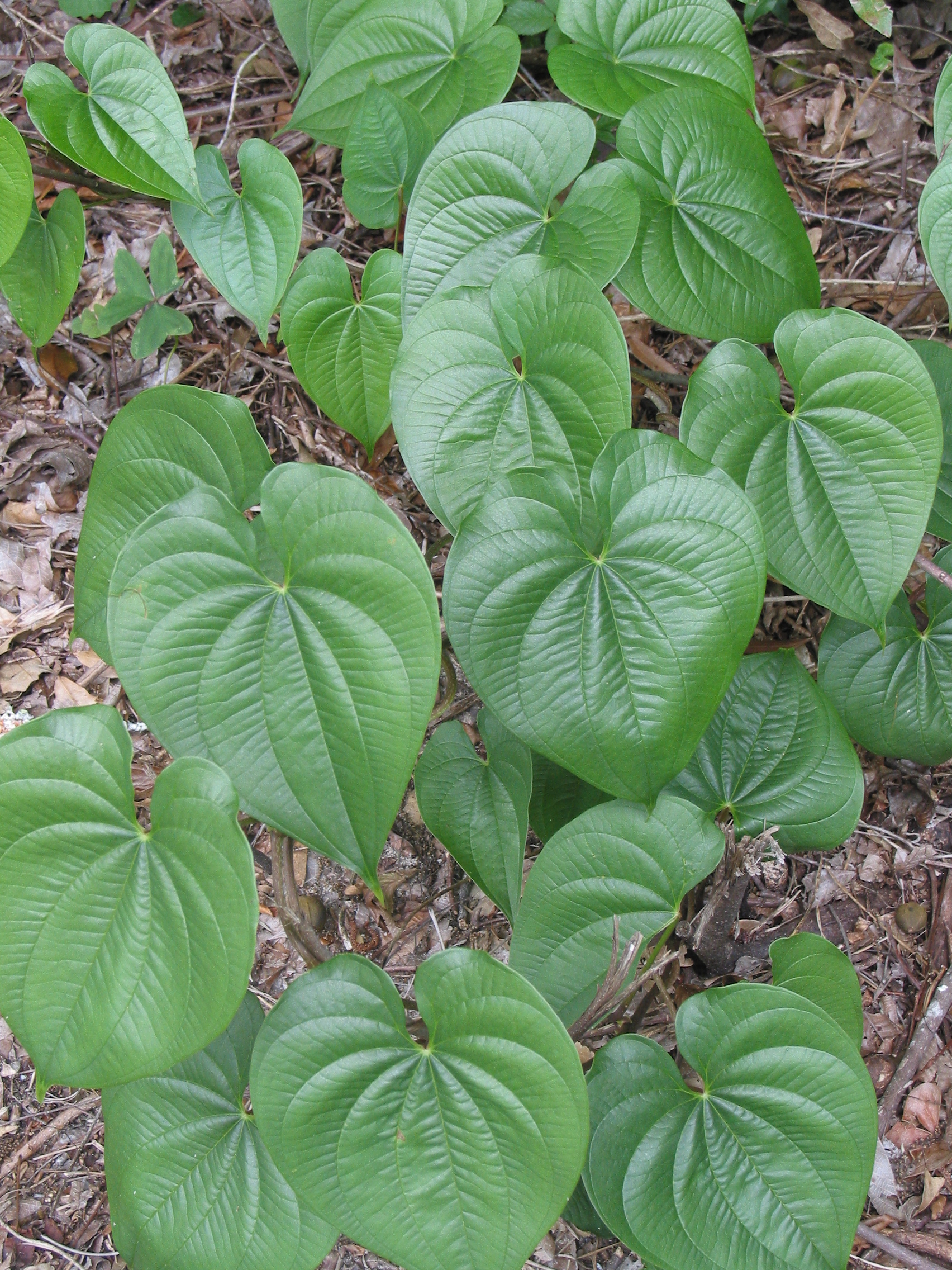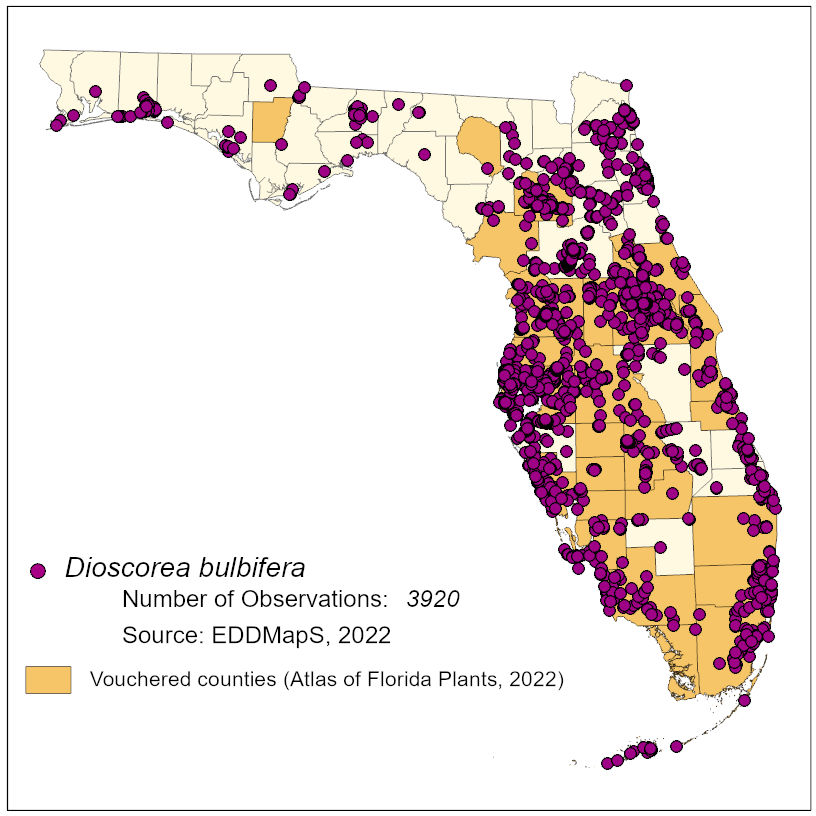Common Name: air-potato
Family: Dioscoreaceae
Common Synonyms: none
USDA Hardiness Zone: 9a-11
Growth Habit: Vine
Origin: Tropical Asia
FISC Category: 1
FDACS Listed Noxious Weed: Yes
Introduction Date: 1905
IFAS Assessment:

.jpg)
Twining, herbaceous vine, with small or absent underground tubers. Stems to 20 m or more. Internodes, round, not winged. Bulbils roundish to 12 cm, surfaces smooth and formed in leaf axils. Leaves with long stalks, alternate, to 20 cm, broadly heart-shaped. Flowers rare, small fragrant, dioecious, in panicles or spikes to 11 cm long. Fruit a capsule.
Hammocks, hardwood forests, disturbed areas
Similar to D. alata which has opposite leaves and native D. floridana, which never forms bulbils and has smaller leaves.

NA
Dave's Garden. 2014. PlantFiles: Air potato, Dioscorea bulbifera. http://davesgarden.com/guides/pf/go/32235/. Accessed on June 20, 2014.
Langeland, K.A., H.M. Cherry, C.M. McCormick, K.C. Burks. 2008. Identification and Biology of Non-Native Plants in Florida's Natural Areas-Second Edition. IFAS Publication SP 257. University of Florida, Gainesville, Florida.
Langeland, K.A., J.A. Ferrell, B. Sellers, G.E. MacDonald, and R.K. Stocker. 2011. Integrated management of non-native plants in natural areas of Florida. EDIS publication SP 242. University of Florida, Gainesville, Florida.
Wunderlin, R. P., and B. F. Hansen. 2008. Atlas of Florida Vascular Plants (http://florida.plantatlas.usf.edu/).[S. M. Landry and K. N. Campbell (application development), Florida Center for Community Design and Research.] Institute for Systematic Botany, University of South Florida, Tampa.